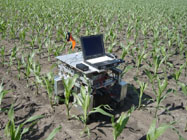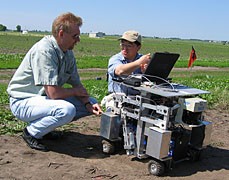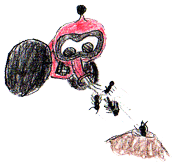The university wants to create a robotics ecosystem out of the robots. They pattern this after groups of bees. One bee goes out and finds a source of nectar and then comes back and tells the other bees where to go. The Ag Ants can do the same. One robot might find weeds and then transmit the location to other Ag Ants that would come and help attack the weeds. It’s like creating an army of robots that can go out and survey a field, collecting information, and sending back data. Then a group of robots go out to complete the necessary task.
Some common tasks that Ag Ant robots could do would include finding weeds, insects, or disease; sampling the soil for nutrients; and application of pesticides or herbicides.
Ag-Ants

Back to Current State


Have you heard of a robot that acts like a ant? Well, thats an Ag Ant for you. The University of Illinois engineering department has developed several agricultural robots. One of them is Ag Ant. The Ag Ant robots are small and are very inexpensive. They are designed to replace larger more expensive farm machinery. The Ag Ants are only 1 foot long and with most things (besides nanos) the smaller the less expensive. They move around using mechanical legs. Ag-Ants are autonomous and can direct themselves down rows of corn using sensors. The sensor tells the robot when they reach the end of the row and need to turn around and move into the next row.
Tony Grift is an University of Illinois agricultural engineer. He is working on this project. He says that the way they are solving farming problems is a “smaller and smarter” approach. The Ag Ant is about one foot long and has mechanical legs that it uses to walk through fields. [1]




Grift said, “Instead of applying all of this spray that might drift everywhere, a robot could actually ‘spit’ chemical at the plant with great precision, using a very small amount of chemical.” [1]